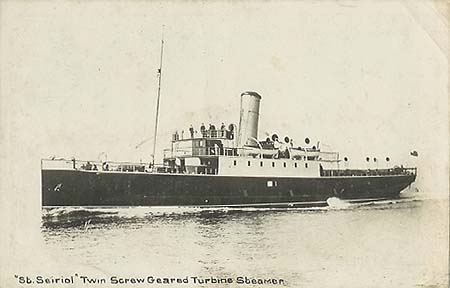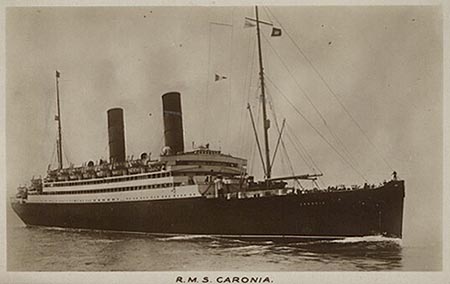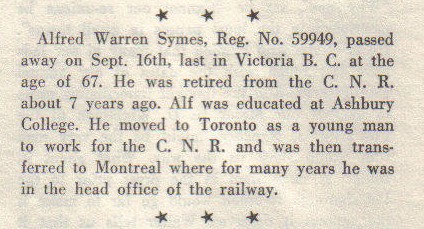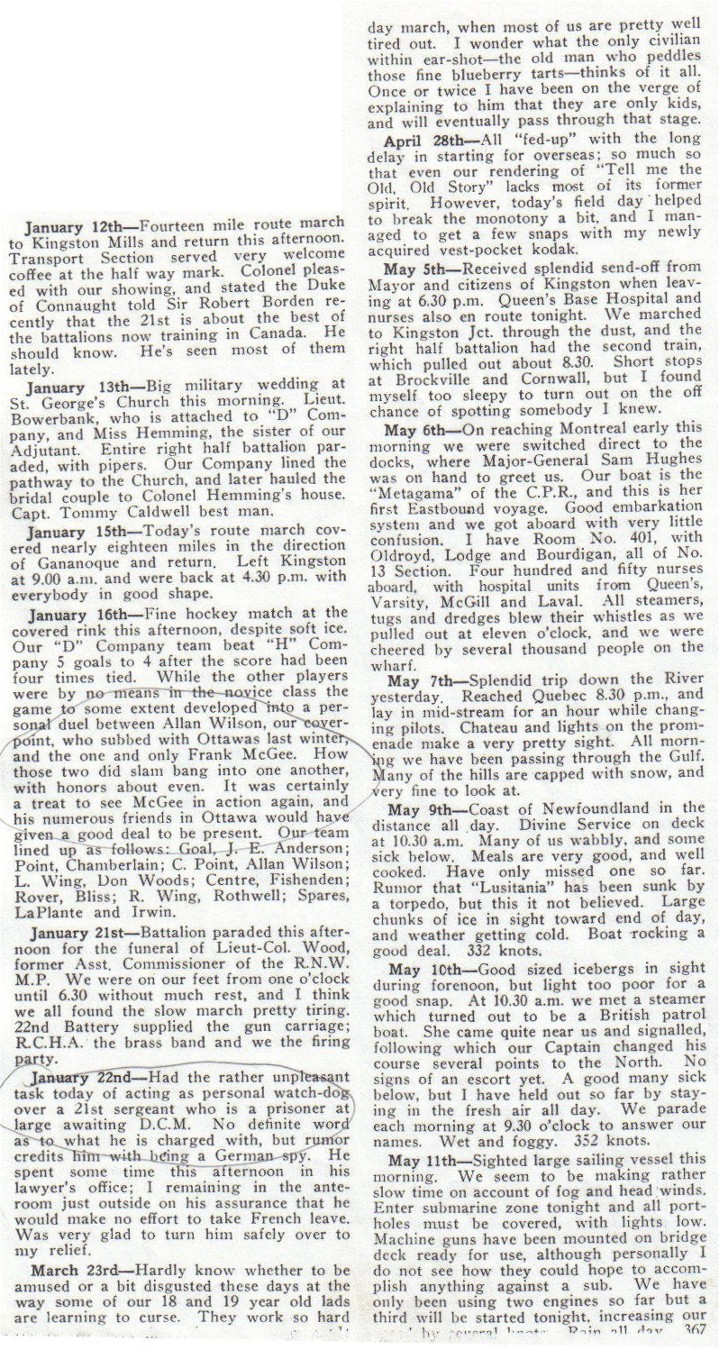|
Alfred Warren Symes
|
||||||||||||||||||||||||||||||||||||||||||||||||||||||||||||||||||||||||||||||||||||||||||||||||||||
|
||||||||||||||||||||||||||||||||||||||||||||||||||||||||||||||||||||||||||||||||||||||||||||||||||||
|
The Kingston
Daily Standard October 5, 1915 Warmly Welcomed by French People - Marched over Cobble-stone Roads - Tommy Atkins was Very Glad to See Them - Just Behind the Trenches at Time of Writing - Had a Calm Trip Across the Channel
The arrival of the 21st battalion which contains many Kingston men, in
France is described in an interesting letter from Pte AW Symes, of that unit, to Mr PB
Symes, of Ottawa. His letter was dated Sept.
19th and said he expected his battalion would go into the trenches on the
following Tuesday. MARCHING
THROUGH FRANCE
His letter continues:
“We had a safe, comparatively calm trip to France, and marched through the
French port with bands playing next morning to a rest camp beyond the town. We were not only surprised but delighted with the
treatment of the French people, in view of the thousands of British troops who must have
passed through ahead of us since the war began. When
we halted on the way up a hill they brought out bottle after bottle of their best vin
blanc and gave a small glassful to each man while it lasted. We remained in camp until about 7.30 pm and then
marched three miles to a freight station, finding the going hard owing to the heat and the
weight of our packs. The French engines and
equipment seem larger than anything in England, and almost as big as the ones in Canada. We were packed into stock cars like sardines (44
men to the car) but nobody complained so long as we had room for both feet at once. After a journey of several hours we got out at a
station and helped to haul our transport wagons out of the freight shed, finally marching
away about 3 in the morning over a road paved with cobble stones and lined on either side
with tall elm and poplar trees which seem to be a feature of this part of the country. We marched all day—with frequent
rests—passing through villages and towns as well as agricultural districts. The crops look very good and are being harvested
by old men, women and children, besides men unfit for the army. The hops, which are strung on wires and rise to a
height of 25 feet above the ground, are strange to Canadians: WANTED
CANADIAN BATTALION
“About 5 pm—after the hardest day the 21st has ever
known—we were billeted in farm houses (or rather outside of them), for the night,
some 15 miles behind the firing line. Everything
looked very peaceful here in spite of the low rumble of guns like distant thunder, but we
found that nearly every farm had been the scene of some encounter during the now
historical days of September, 1914, when the cavalry of the Germans passed through in
their much talked of dash on Paris. The
inhabitants between here and the front take things very calmly now, and we noticed at
least one house demolished by a shell, which had been entirely rebuilt, which I think
shows considerable faith in the Allies’ ability to prevent a second German visit. We rested all day Friday in this place and in the
afternoon were lined up and addressed by a general whose name is often in the Canadian
papers. He told us he had been asked by his
superior officer if he could supply a Canadian battalion on short notice and we are the
answer. ENTERING
THE WAR AREA
“We accordingly left yesterday morning and covered the eleven miles to our
present location in good shape. For the last
five or six miles the road was lined on each side by motor trucks, some undergoing
repairs, others waiting until needed. English
troops we have met are fine men and treated us well.
During one of our halts yesterday a company of them were preparing their dinner
near the road, and in company with two other scouts I drifted across to be received with
open arms. They shared their tea, bacon and
cheese with us, and then collected all the cigarettes available to send over to “the
Canadians.”
“We are now in a rest camp just four miles from the trenches and there are
frequent booms of heavy guns. Several times
we have seen British or German aeroplanes being shelled by the other side, and even at
this distance it is a thrilling thing to watch. You
see the machine like a tiny speck in the sky with little white puffs of smoke breaking out
all round. More than 200 shells were fired at
one plane today abut without result.
“While the weather has been warm until today it is cold sleeping out at night,
and will get worse soon. We can stand the
cold all right but are hoping it will keep dry.”
|
||||||||||||||||||||||||||||||||||||||||||||||||||||||||||||||||||||||||||||||||||||||||||||||||||||
|
Below is a diary that was kept by Alfred Symes that recounts his experiences in 1915. This was printed in the June 1936 Communiqué, which was the 21st Battalion Association's post war newsletter. 1915
|
||||||||||||||||||||||||||||||||||||||||||||||||||||||||||||||||||||||||||||||||||||||||||||||||||||
|
|
||||||||||||||||||||||||||||||||||||||||||||||||||||||||||||||||||||||||||||||||||||||||||||||||||||

|
||||||||||||||||||||||||||||||||||||||||||||||||||||||||||||||||||||||||||||||||||||||||||||||||||||
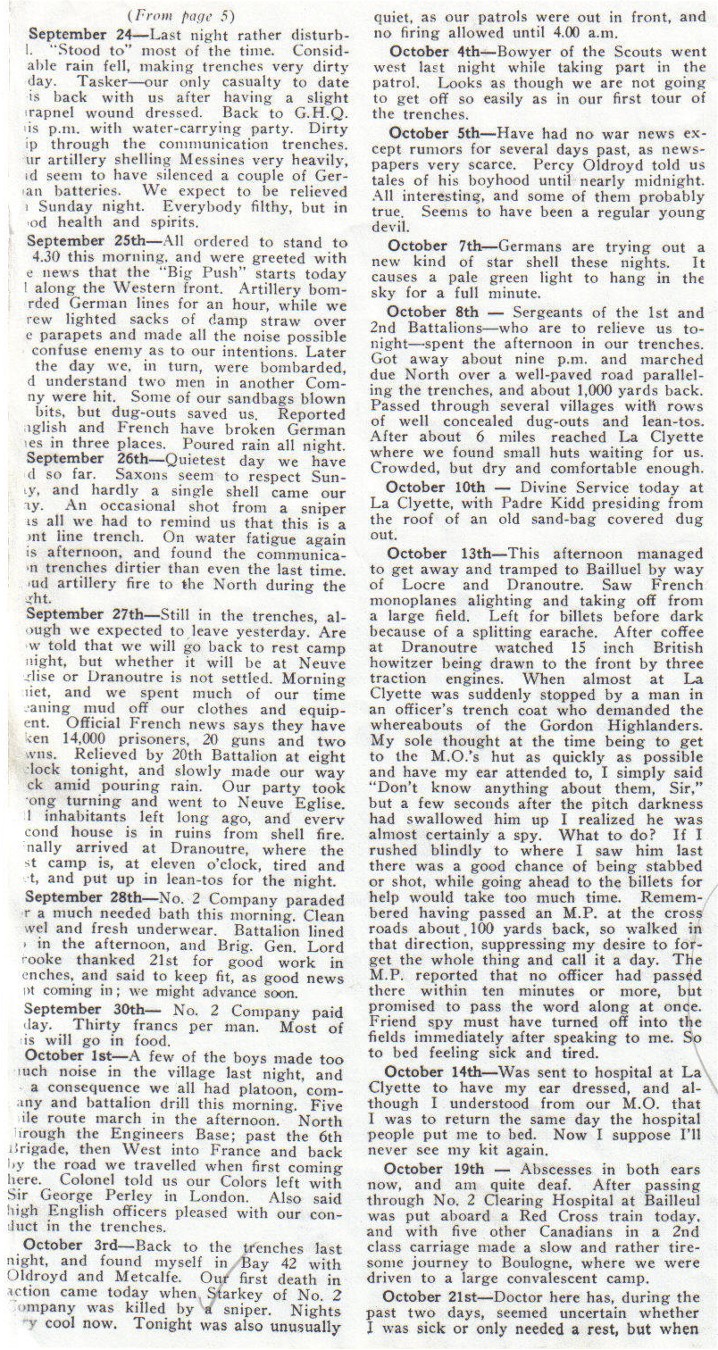
|
||||||||||||||||||||||||||||||||||||||||||||||||||||||||||||||||||||||||||||||||||||||||||||||||||||

|
||||||||||||||||||||||||||||||||||||||||||||||||||||||||||||||||||||||||||||||||||||||||||||||||||||
Below is from
the January 1937 issue of the Communiqué. Sgt Symes was the unofficial historian
for the 21st Battalion veterans that made the trip to Vimy Ridge for the unveiling of the
Vimy Memorial. He made a comprehensive report to the Association which was printed
in that issue. He is 4th from the left in the back row. To date, this is the
only photo that I have of him.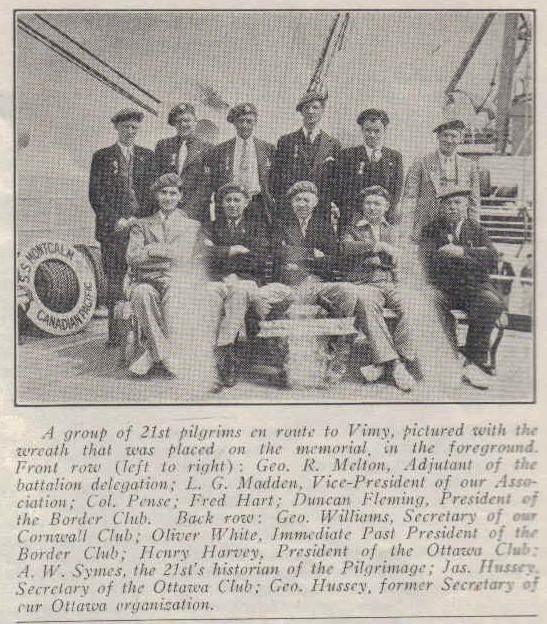 |
||||||||||||||||||||||||||||||||||||||||||||||||||||||||||||||||||||||||||||||||||||||||||||||||||||

